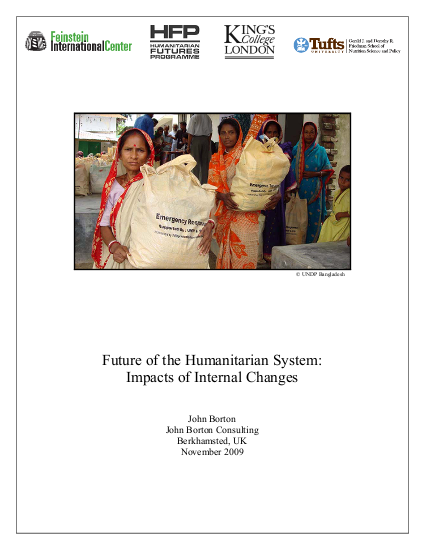
The objective of this study is to analyse the impacts of internal changes within the humanitarian system over the next two decades on the longer-term viability and shape of the humanitarian aid business at the global level. Key contributions to futures studies and strategic foresight fields recommend the study and assessment of the recent history and current situation before attempting to anticipate the future.1 Section 2 therefore summarises the principal features of the humanitarian system of 2009 and some of the significant recent trends. It is possible that certain trends may become drivers of change in the next few years. Section 3 considers the likely wider context in which the humanitarian system will be operating in 15 to 20 years time. This is done by reviewing the relevant work of some well-resourced and high calibre futures teams such as the US National Intelligence Council. Section 4 considers how drivers of change can be identified and reviews available material on future drivers in relation to the humanitarian system. Section 5 reflects on the salient points from section 3 (the wider context in 2025) and section 4 (available material anticipating the future of the humanitarian system) and indicates what are considered to be the key drivers of change that are likely to shape the humanitarian system of 2025. This will provide a sense of what the humanitarian system may well look like and how it will operate in 2025. Section 6 then seeks to convey a sense of how this might all look from the perspective of programmes being implemented in Ethiopia and Bangladesh in 2025. In preparing to undertake this study, key contributions in the field of futures and foresight studies were reviewed, revealing how well developed and sophisticated this field has become. Annex 1, ‘The field of futures studies and foresight,’ and Annex 2, ‘Terminology, concepts, methods and tools,’ have been written as a means of providing readers with an accessible entry point to the futures and foresight fields. The more accessible these fields can be made to colleagues in the humanitarian system, the more likely it is that strategic foresight processes will be adopted and pursued in the sector and that agencies will make the adaptations required to cope with likely trends and events.